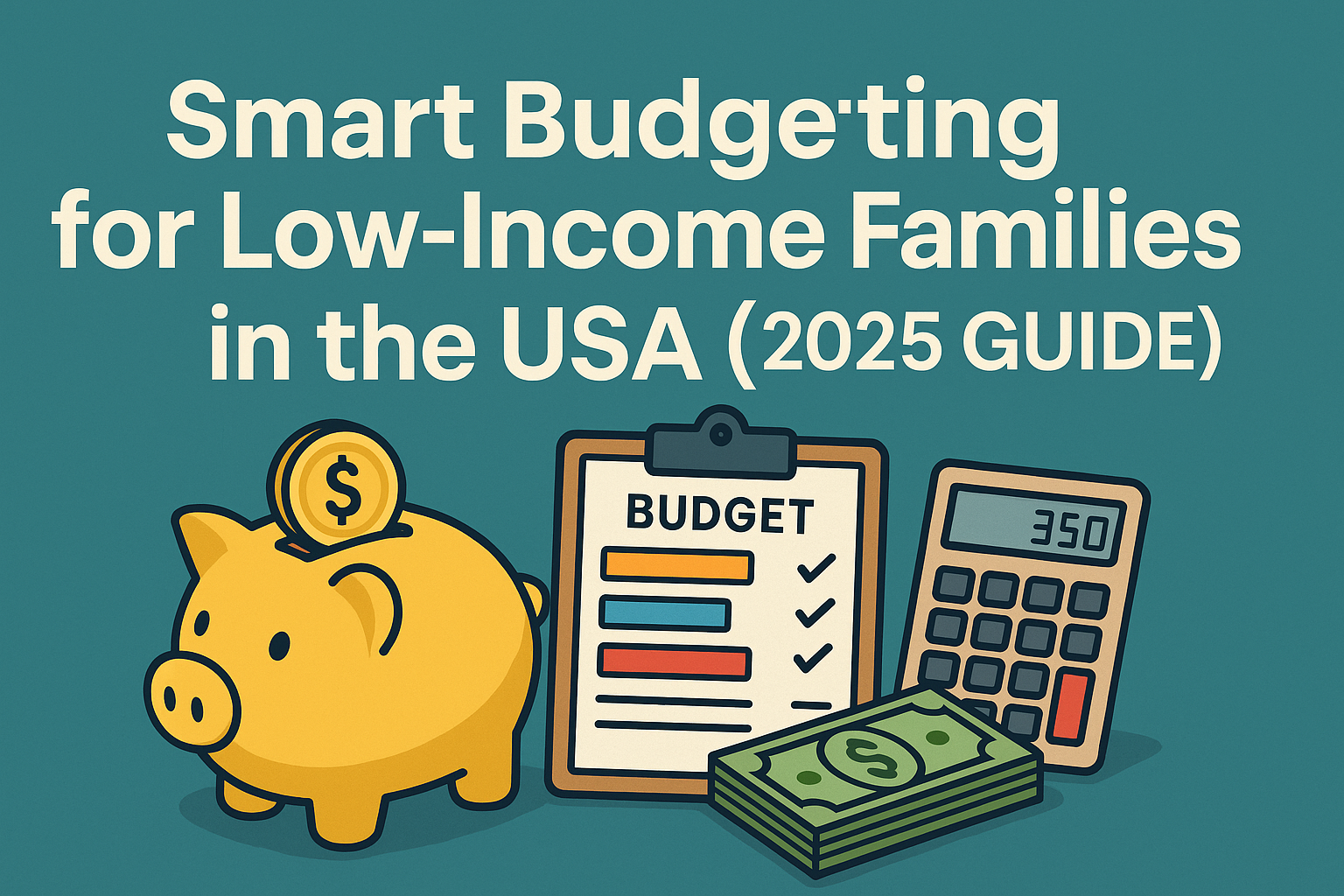Discover practical budgeting tips for low-income families in the U.S. Learn how to cut costs, manage money smarter, and build savings, even with limited income.

Living on a low income doesn’t mean you can’t achieve financial stability. With the right strategies, you can cover basic needs, pay off debts, and even start saving for the future. This guide offers practical, realistic budgeting tips specifically tailored for low-income households in the U.S.
Why Budgeting Matters More for Low-Income Families
When every dollar matters, budgeting becomes a survival tool. Without a proper budget, it’s easy to fall behind on bills, rely on credit, and stay stuck in the paycheck-to-paycheck cycle.
1. Track Every Dollar You Spend
Start by listing all your income and expenses. This helps identify where your money goes and which expenses can be reduced.
| Category | Monthly Spend (Example) |
|---|---|
| Rent | $900 |
| Utilities | $150 |
| Groceries | $300 |
| Transportation | $120 |
| Insurance | $80 |
| Cell/Internet | $60 |
| Entertainment | $50 |
| Total | $1,660 |
Tip: Use free apps like Mint, EveryDollar, or a simple Excel sheet.
2. Create a Zero-Based Budget
A zero-based budget means every dollar has a purpose — whether it’s for rent, food, or savings. At the end of the month, your income minus your expenses should equal zero.
Formula:Total Income – Total Expenses = $0
This ensures you stay intentional with your money and avoid wasteful spending.
3. Prioritize Needs Over Wants
It’s easy to mix up needs and wants. Focus on essential expenses first:
- Food
- Housing
- Utilities
- Healthcare
- Transportation
Delay or avoid:
- Subscriptions
- Dining out
- Brand-name items
Reminder: Cutting $5/day on takeout saves $150/month — or $1,800/year.
4. Use the Envelope System for Cash
Withdraw your monthly budget in cash and divide it into envelopes:
- $300 for groceries
- $100 for gas
- $50 for entertainment
When the envelope is empty, you stop spending. This system keeps you from going over budget.
5. Save on Groceries Without Sacrificing Quality
| Tactic | Estimated Monthly Savings |
|---|---|
| Shop store brands | $50 |
| Use digital coupons | $20–$40 |
| Buy in bulk (non-perishables) | $30–$50 |
| Plan weekly meals | $40–$60 |
Look for local food banks, SNAP benefits, and WIC (Women, Infants, and Children) assistance if eligible.
6. Eliminate High-Interest Debt
Paying off credit cards or payday loans can free up hundreds of dollars. Start with the snowball method:
- Pay off smallest debt first
- Roll that amount into the next payment
- Gain momentum and stay motivated
Example: Paying off a $500 card with 25% APR saves you $125+ in interest in one year.
7. Use Community and Government Resources
Many U.S. programs are designed to help low-income families:
- LIHEAP: Help with heating and cooling bills
- SNAP: Monthly food assistance
- Medicaid/CHIP: Free or low-cost health insurance
- TANF: Temporary Assistance for Needy Families
These can reduce your expenses so you can save more.
8. Build an Emergency Fund — Slowly but Steadily
Even saving $5/week builds up to $260/year.
Use a separate savings account. Automate transfers if possible. Having just $500 saved helps avoid payday loans or skipping bills during a crisis.
9. Cut Subscriptions & Hidden Costs
Audit your recurring charges:
- Unused streaming services
- App subscriptions
- Gym memberships
Use services like Trim or Rocket Money to cancel unwanted subscriptions.
10. Earn Extra with Flexible Side Gigs
If possible, try low-investment gigs like:
- Babysitting
- Pet walking
- DoorDash/UberEats
- Freelancing (on Fiverr or Upwork)
Even an extra $100/month can pay off a utility bill or go straight to savings.
Historical Context: U.S. Income Inequality
| Year | Median Household Income (USD) | % Living Paycheck-to-Paycheck |
|---|---|---|
| 2015 | $56,516 | 49% |
| 2020 | $68,703 | 61% |
| 2024 | $74,580 (est.) | 63% |
Source: U.S. Census Bureau, LendingClub reports
Despite growing income numbers, cost of living and inflation have outpaced income growth. Budgeting is more important than ever.
Future Outlook: Tech & AI to Help Budgeting
AI-driven budgeting apps are growing. Tools like:
- Cleo (AI money coach)
- You Need a Budget (YNAB)
- Simplifi by Quicken
They use real-time data to help you make smarter decisions, avoid late fees, and even predict expenses.
Final Thoughts
Budgeting is not about restriction, it’s about direction.
Even with low income, small changes can lead to big results. Start with what you have, stay consistent, and involve the whole family in the process.
Every dollar you manage wisely today gives you freedom tomorrow.



